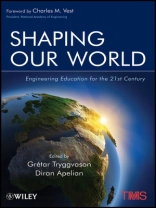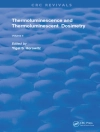A look at engineering education today– with an eye totomorrow
Engineering education is in flux. While it is increasinglyimportant that engineers be innovative, entrepreneurial, collaborative, and able to work globally, there are virtually noprograms that prepare students to meet these new challenges.Shaping Our World: Engineering Education for the 21st Century seeks to fill this void, exploring revolutionaryapproaches to the current engineering curriculum that will bring itfully up to date and prepare the next generation of would-beengineers for real and lasting professional success.
Comprised of fourteen chapters written by respected experts onengineering education, the book is divided into three parts thataddress the need for change in the way engineering is taught;specific innovations that have been tested, why they matter, andhow they can be more broadly instituted; and the implications forfurther changes. Designed to aid engineering departments in theirtransition towards new modes of learning and leadership inengineering education, the book describes how to put into practiceeducational programs that are aligned with upcoming changes, suchas those proposed in the NAE’s Engineer of 2020 reports.
Addressing the need to change engineering education to meet thedemands of the 21st century head on, Shaping Our Worldcondenses current discussions, research, and trials regarding newmethods into specific, actionable calls for change.
Spis treści
FOREWORD ix
Charles M. Vest
PREFACE xiii
CONTRIBUTORS xvii
PART I THE NEED AND CONTEXT 1
1. MEETING NEW CHALLENGES: TRANSFORMING ENGINEERING EDUCATION3
Grétar Tryggvason and Diran Apelian
2. ONE WORLD: PREPARING ENGINEERS FOR THE GLOBAL ECONOMY19
Michael J. Dolan
3. ENGINEERS: LEADERS, INNOVATORS, AND BUILDERS 27
Diran Apelian
4. HOLISTIC EDUCATION: LEARNING AND DOING IN CONTEXT 39
Dennis D. Berkey
PART II EFFECTIVE PRACTICES 53
5. IGNITION: THE GREAT PROBLEMS SEMINARS 55
Arthur C. Heinricher and Kristin Wobbe
6. GLOBAL CITIZENSHIP: STUDENTS SOLVING REAL PROBLEMS AROUND THEWORLD 77
Richard F. Vaz, Natalie A. Mello, and David Di Biasio
7. FOSTERING CITIZENSHIP AND ADVOCACY THROUGH THE HUMANITIES ANDARTS 107
Svetlana Nikitina and David Spanagel
8. THE CAPSTONE PROJECT: AN INTEGRATED EXPERIENCE 123
Fred J. Looft and Yiming (Kevin) Rong
9. TECHNICAL EDUCATION IN THE INNOVATION ECONOMY 151
Curtis R. Carlson and Jerome J. Schaufeld
10. A NEW DISCIPLINE FOR A NEW CENTURY: ROBOTICS ENGINEERING179
Michael A. Gennert, Fred J. Looft, and Grétar Tryggvason
11. GRADUATE EDUCATION FOR THE PROFESSIONAL ENGINEER 201
Richard D. Sisson and Nikolaos A. Gatsonis
12. HOLISTIC GRADUATE EDUCATION: FIRE PROTECTION ENGINEERING225
Kathy A. Notarianni
PART III OUTCOMES AND IMPLICATIONS 241
13. FORTY YEARS OF OUTCOMES-BASED PROJECT CENTRIC EDUCATION:LESSONS LEARNED 243
John Orr
14. SO MUCH ACCOMPLISHED: SO MUCH TO BE DONE 265
Eli Fromm
BIOSKETCHES 283
O autorze
Grétar Tryggvason was the head of the Department of Mechanical Engineering at Worcester Polytechnic Institute (WPI), before accepting his present position as the Viola D. Hank Professor of Aerospace and Mechanical Engineering at the University of Notre Dame. He is well known for his contributions to computational fluid dynamics, particularly the development of methods for multiphase flows and for direct numerical simulations of such flows. He is the Editor in Chief of the Journal of Computational Physics, and a Fellow of the APS and ASME.
Diran Apelian is the Howmet Professor of Engineering and Director of the Metal Processing Institute at WPI. He is well known for his contributions to the field of solidification processing of light metals. During the past decade, he has focused on sustainable development, and is the founding director of the NSF Center for Resource Recovery and Recycling. He is past president of TMS, an NAE member, and a Fellow of TMS, APMI, and ASM.












